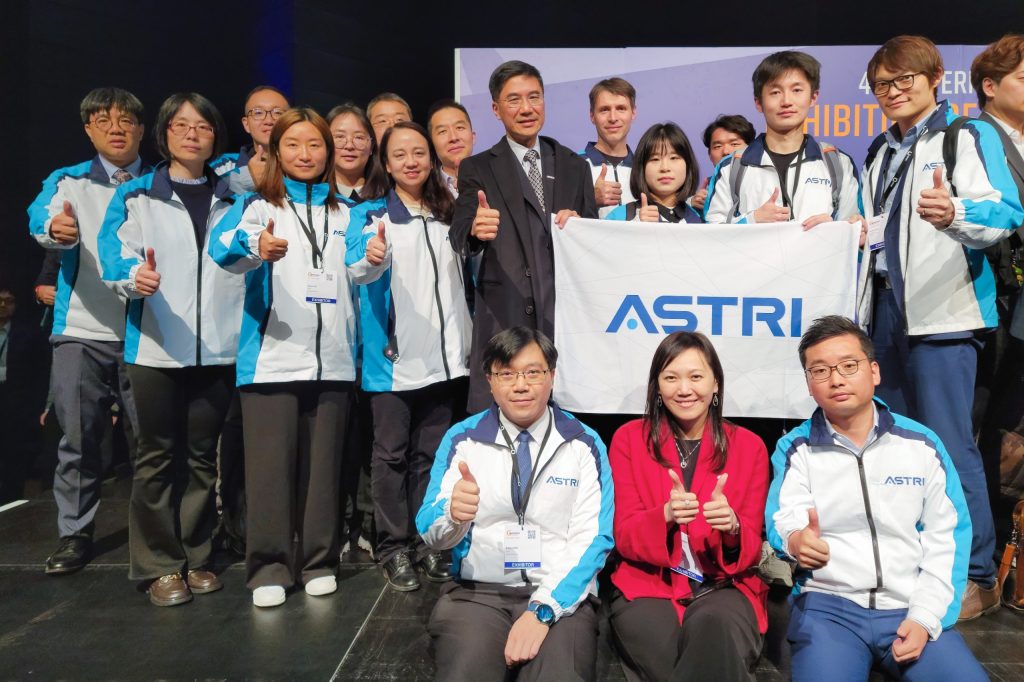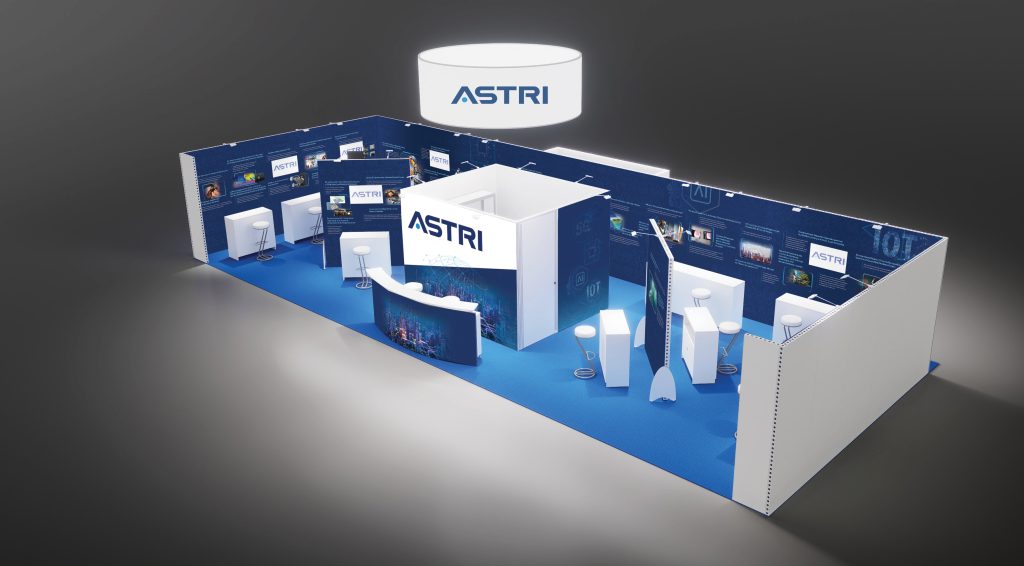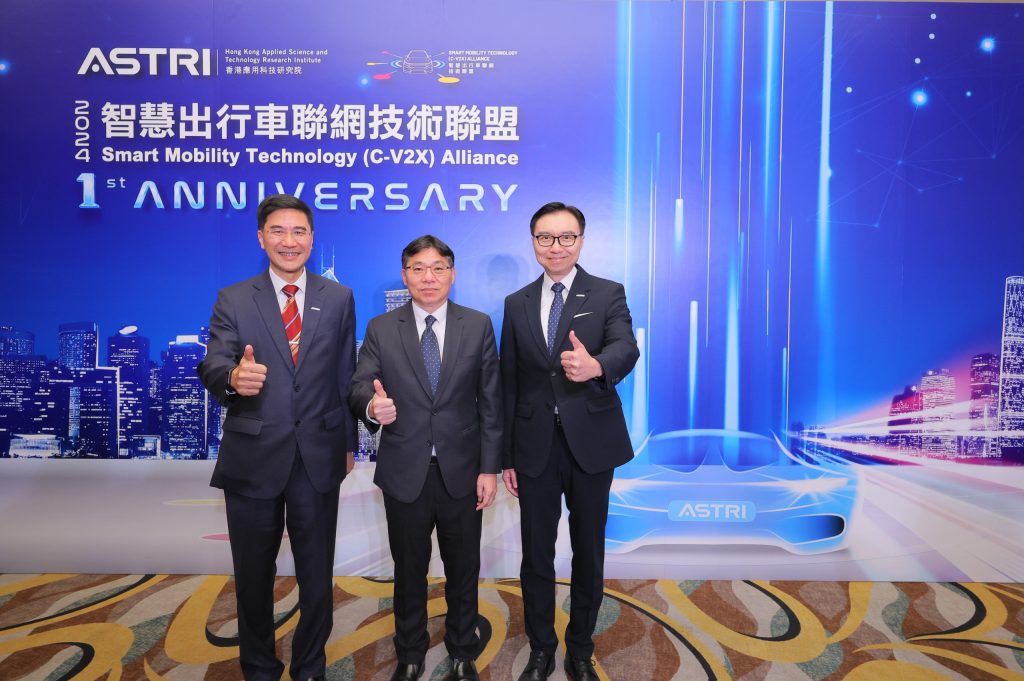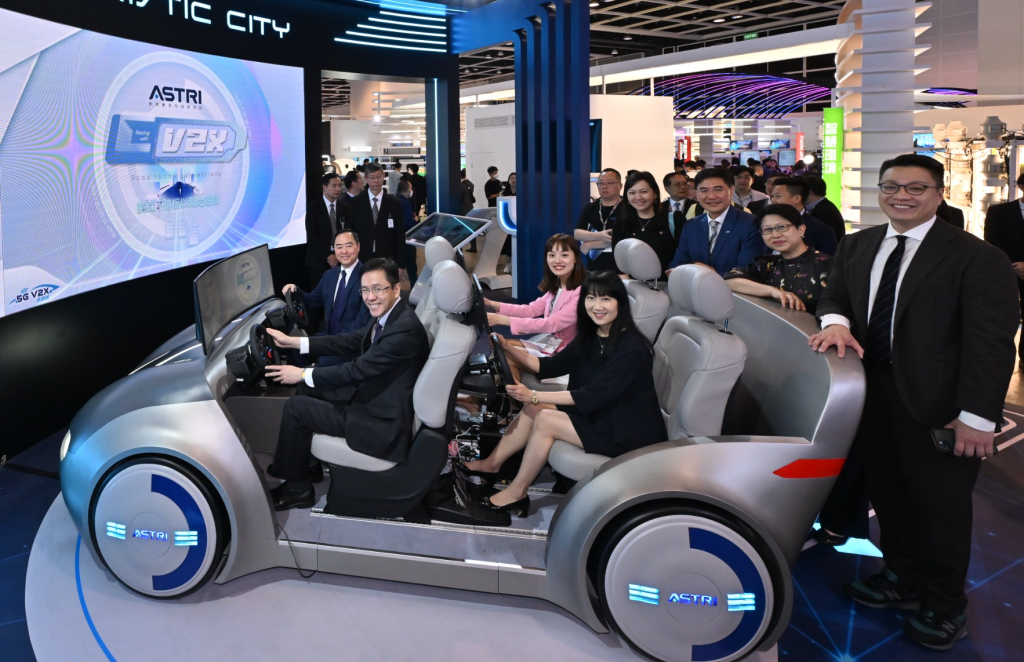[Hong Kong, 14 November 2017] The Hong Kong Applied Science and Technology Research Institute (ASTRI) hosted the “Industry and University Collaboration Forum (IUCF) 2017” today (14 November 2017) at the Hong Kong Science Park. The Forum attracted nearly 400 participants including influential industry and technology leaders, experts, entrepreneurs, academics, and government officials, who exchanged knowledge and insights on the latest development of innovation and technology. The Forum’s participants explored how to unleash Hong Kong’s full potential in innovation and technology, seize the opportunities in Guangdong-Hong Kong-Macao Greater Bay Area for reindustrialisation, and contribute to the country’s wider development vision.
The theme for this year’s IUCF is “Connecting the Dots for Reindustrialisation: The Greater Bay Area Landscape”. More than 27 industry experts and leaders – from local and regional universities, research institutes and technology companies as well as senior government officials – delivered inspiring keynote speeches, deliberating how innovation and technologies can facilitate the next generation of industrial revolution in the Greater Bay Area. The discussion topics were aligned with the socio-economic priorities of Hong Kong; national programmes related to ‘Industry 4.0’, ‘Made in China 2025’ and the ‘Greater Bay Area’; as well as international mega-plans like the ‘Belt and Road’ initiative.
In his opening remarks, Hon Mr Nicholas W Yang, GBS, JP, the Secretary for Innovation and Technology, HKSAR Government said that Hong Kong must diversify its economy and develop high value-added industries in the face of global competition. “The Government will actively participate in the development of the Bay Area, so as to create favourable conditions for diversifying the economy, in particular for promoting innovation and technology development. Hong Kong and Shenzhen will join hands to develop an international innovation and technology hub in the Bay Area,” he added. A basket of measures will be put in place, including doubling the ratio of GDP on R&D from 0.73% to 1.5%, rendering support for R&D under the Innovation and Technology Fund, introducing “super deduction” to stimulate private sector R&D and launching a new $500 million “Technology Talent Scheme” for technology talent development. Under the scheme, local enterprises will be subsidised on a matching basis for training staff in advanced manufacturing technologies, especially those related to “Industry 4.0”.
In his welcome remarks, Mr Wong Ming-yam, BBS, JP, Chairman of ASTRI said, “Intelligent Manufacturing is one of the five pillars in ASTRI’s R&D strategy. ASTRI develops a wide range of advanced solutions in areas like robotic vision, cyber-physical systems, integrated power module packaging and predictive analytics for big data. Our solutions are applied in various industries to enhance their productivity and competitiveness. As we partner with industry players in both Hong Kong and across the Greater Bay Area, developing and offering smart solutions for smart factories, we pledge to promote technology and innovation not just for our city, but also for the nation.”
One of the forum’s keynote speakers, Prof Tsui Lap-chee, GBM, GBS, JP, Founding President of the Academy of Sciences of Hong Kong, talked about the role of basic research in building an innovation and technology (I&T) ecosystem. Citing examples from all over the world, Professor Tsui reminded the audience that “Going at it all by ourselves is not an option for us”, particularly in sectors that thrive on innovation and technology. “Even Boeing, the world’s most sophisticated aircraft manufacturer, “regularly sends its professionals to other R&D labs and top engineering schools”, he said, reinforcing the need for seamless upstream-downstream integration in innovative R&D. Professor Tsui touched upon the role innovation and technology can play in the transformation journey of the Greater Bay area, and suggested that “Hong Kong must collaborate with partners across the Bay area and beyond, while investing heavily in both basic and applied research.”
Ms Wu Ling, Director of Ministry of Science and Technology Wide Band Gap Semiconductor Programme Office; and Professor Li Ze-xiang, Professor of the Department of Electronic and Computer Engineering, and Founder of Automation Technology Centre and Robotics Institute at the Hong Kong University of Science and Technology, and Chairman of the Board at DJI — the world’s largest drone producing company, also delivered keynote speeches in the Forum. Ms Wu Ling discussed the current status, trends and strategies in 3rd generation semiconductor development. She explained that “3rd generation semiconductors, a key material for facilitating industrial and infrastructural development, has significant relevance across different industries related to 5G mobile communications, electric vehicles, new energy, health technologies, and smart manufacturing.” In his keynote speech, Professor Li Ze-xiang talked about the relationship between innovation, entrepreneurship and re-industrialisation. He also discussed the evolution of smart technologies in the Bay Area which holds “tremendous potential for Hong Kong’s innovation ecosystem and its overall economy.”
A number of other senior experts and eminent professionals focusing on intelligent manufacturing related technologies shared their insights and R&D experience on 3rd Generation Semiconductors, Robotics, Artificial Intelligence and Internet of Things (IoT) at the Forum. This is the ninth consecutive year since 2009 that ASTRI has hosted the IUCF, its annual signature event. IUCF provides a meaningful platform for the industry and academia to discuss the latest technological developments, and cultivate cross-sector or cross-border collaborations in technological R&D.
“Re-industrialisation” has been a strategic development direction of many developed economies. While striving to upgrade the efficiency and productivity of their manufacturing industries, countries worldwide seek to integrate advanced technologies such as Internet of Things (IoT), Artificial Intelligence (AI), new materials and smart manufacturing processes. China, the global leader in manufacturing, has an ambitious plan to revamp its manufacturing sector. The plan rides on the concept of Industry 4.0: seeking innovation-driven development, applying smart technologies, upskilling its workforce, pursuing green development and redoubling the efforts to upgrade China from a manufacturer of big quantity to one of high quality. Southern China, is surely the most dynamic region in the country in terms of manufacturing. According to a 2016 iiMedia Research, the annual economic growth of in the Greater Bay Area has been 7.9 % annually, with Shenzhen registering a yearly growth of over 9%. In the next six years, the total size of the Bay Area economy is predicted to reach RMB$14.76 trillion. With that level of growth, the Southern China Greater Bay Area will surpass Kyoto, Osaka and Kobe – becoming the world’s leading bay area economic cluster.
Enjoying a strategically important location next to the Pearl River Delta, Hong Kong has had a legacy of successful manufacturing ventures. Manufacturing industry used to be an important economic pillar for the city. Leveraging its proven track record in industrial endeavours coupled with rich expertise, sound infrastructure and world-class institutions, Hong Kong should actively explore the development of smart manufacturing. The city can capitalise on the ‘Made in Hong Kong’ brand, and bring the economy of Hong Kong to a new height.
About ASTRI
Hong Kong Applied Science and Technology Research Institute Company Limited (ASTRI) was founded by the Government of the Hong Kong Special Administrative Region in 2000 with the mission of enhancing Hong Kong’s competitiveness in technology-based industries through applied research. ASTRI’s core R&D competences in various areas are organised under seven Technology Divisions, namely Communications Technologies, Electronics Components, Mixed Signal Systems IC, Advanced Digital Systems, Opto-electronics, Security and Data Sciences, and Intelligent Software and Systems. Five areas of applications including financial technologies, intelligent manufacturing, next generation network, health technologies, and smart city are identified for major pursuit. For further information about ASTRI, please visit www.astri.org
Media enquiries:
For enquiries, please contact Ms Cherry Au (Tel: 3406 2993, email: [email protected])
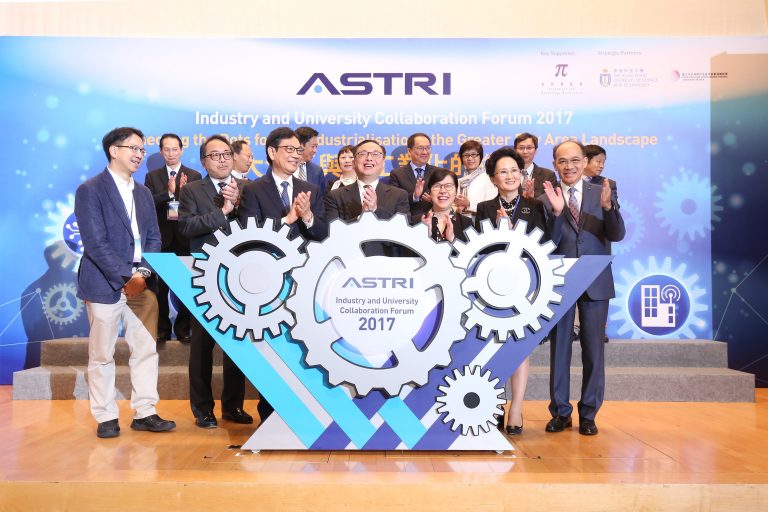
Officiating guests from right to left (1st row): Mr Jimmy Kwok, BBS, MH, JP, Chairman of Federation of Hong Kong Industries; Ms Wu Ling, Director, Ministry of Science and Technology Wide Band Gap Semiconductor Programme Office; Ms Annie Choi, JP, Commissioner of Innovation and Technology; Hon Mr Nicholas W Yang, GBS, JP, the Secretary for Innovation and Technology, HKSAR Government; Mr Wong Ming-yam, BBS, JP, Chairman of ASTRI; Professor Tsui Lap-chee, GBM, GBS, JP, Founding President of the Academy of Sciences of Hong Kong; and Hon Mr Charles Mok, JP, Legislative Councillor accompanied by ASTRI’s Board of Directors and other senior officials.
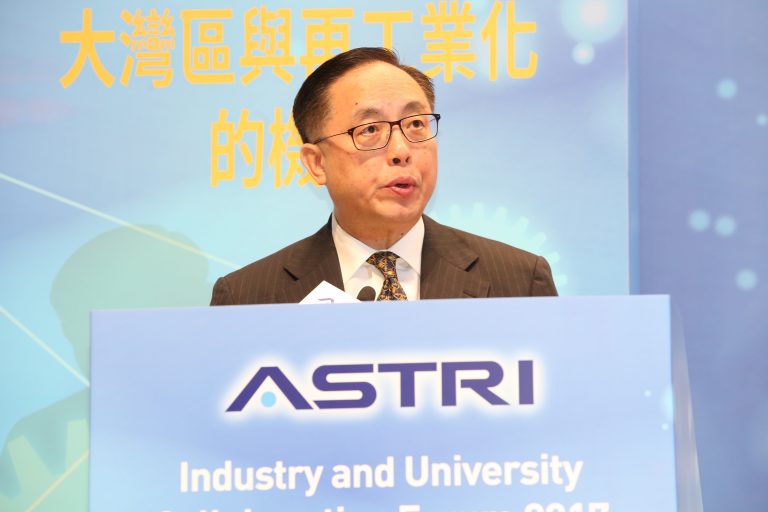
Hon Mr Nicholas W Yang, GBS, JP, the Secretary for Innovation and Technology, HKSAR Government said, “Hong Kong must diversify its economy and develop high value-added industries in the face of global competition.”
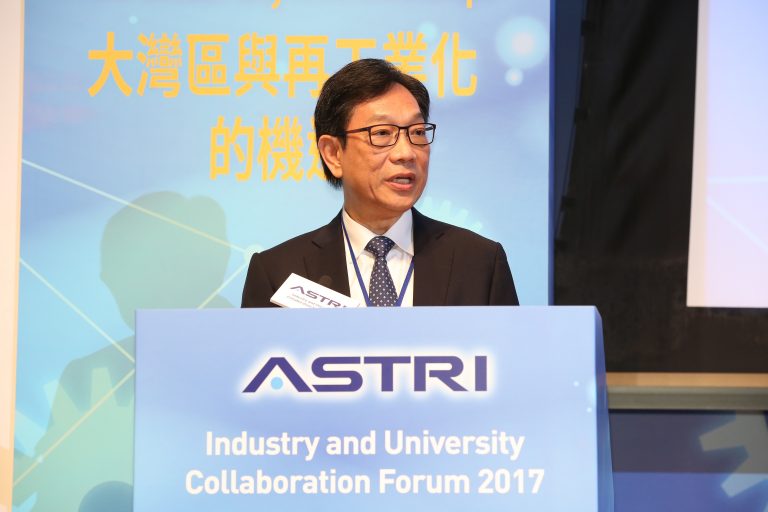
Mr Wong Ming-yam, BBS, JP, Chairman of ASTRI said, “ASTRI pledges to promote technology and innovation not just for our city, but also for the nation.”
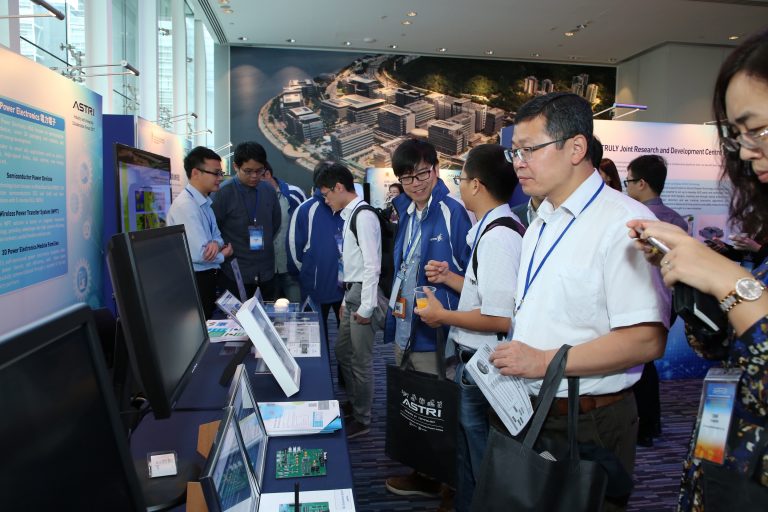
Nearly 400 participants attended ASTRI’s Industry and University Collaboration Forum 2017 and visited the exhibition area to explore the latest development in smart manufacturing technologies.
– END –
Related News
